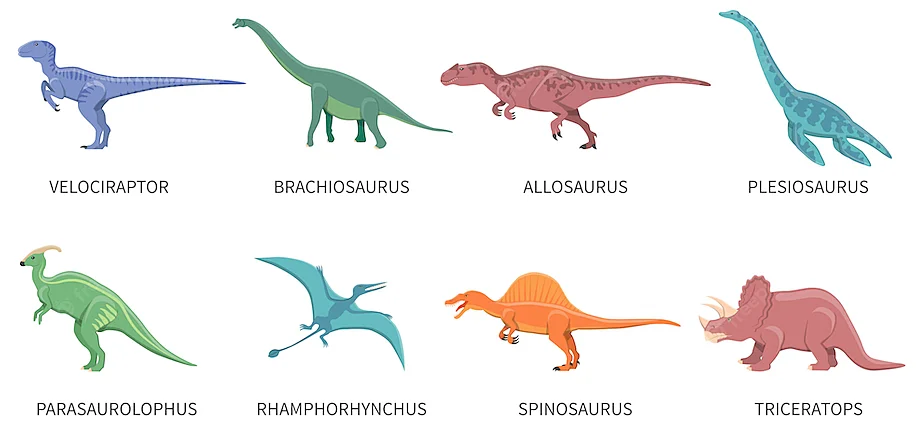
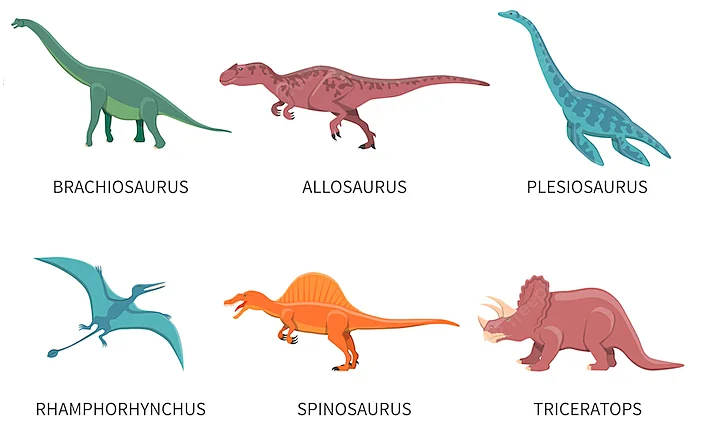
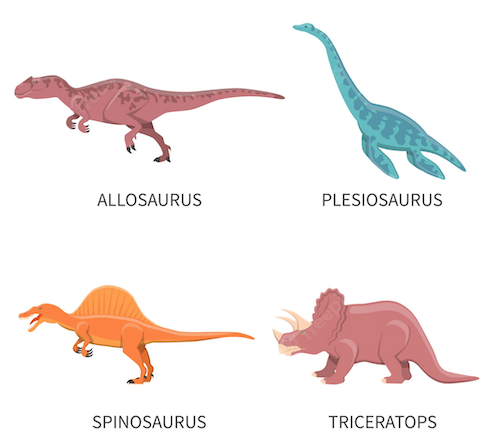



When did these massive creatures roam the Earth? To answer that, let's take a little look at how Earth, and life, has evolved over the last few billion years. Earth is roughly 4.6 billion years old. For a very long time, the Earth was bombarded with asteroids, comets and other foreign objects making it uninhabitable. Scientists believe that these comets brought water and other building blocks of life to our planet.
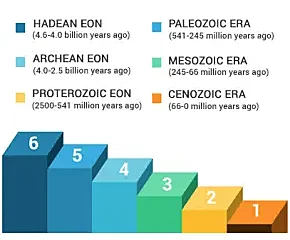
While there is evidence of cyanobacteria (bacteria that is aquatic and photosynthetic, meaning it can manufacture it's own food) on Earth up to 3.5 billion years ago, it wasn't until oxygen and Earth's ozone layer formed that life as we know it began to form. Known as the Cambrian explosion during the Paleozoic Era (541 - 245 million years ago), life in the form of invertebrates, fish, fungi, plants, amphibians and insects emerged.

A massive extinction event at the end of the Paleozoic gave rise to reptiles and dinosaurs. The first dinosaurs on Earth are thought to have evolved about 252 million years ago. The last dinosaurs lived on Earth roughly 66 million years ago. That's 186 million years of dinosaurs! Because dinosaurs lived on Earth for so long, we can break this into three separate time periods:
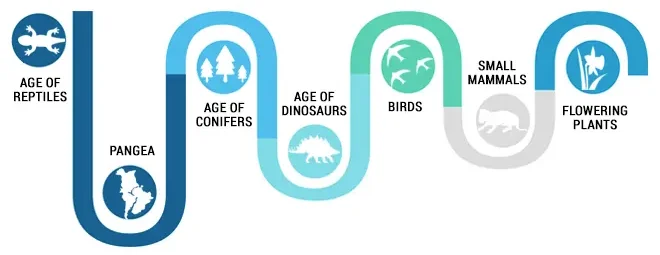
Another massive extinction event at the end of the Cretaceous period brought about the end of the dinosaurs and the rise of mammals. This eventually included the first human species around 7 million years ago.
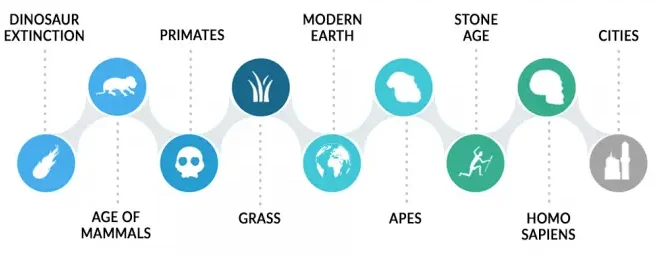
So, where did they all go?
While nobody knows for certain, there is scientific evidence to support multiple catastrophic global events, including one during the Mesozoic Era at the end of the Triassic Period, and another at the end of the Cretaceous Period.
Read more about these extinction theories on our Extinction page!